
Rights Reserved - Free Access.
This digital object is protected by copyright and/or related rights. This digital object is accessible without charge, but its use is subject to written permission.
Unless expressly stated otherwise in the licensing conditions, you are free to make any of the acts permitted by your national copyright and related rights act, including browsing, printing and making a copy for your own personal purposes.
All other acts of reproduction and communication to the public are subject to the licensing conditions attached to the digital object.
ARMY BOOTS OF THE WORLD. REVIEWS
Important notice: we do not sell any boots! The prices are given for information purposes only!
Estonia ![]()
Estonian Combat Boots (Eesti Kaitseväe saapad)
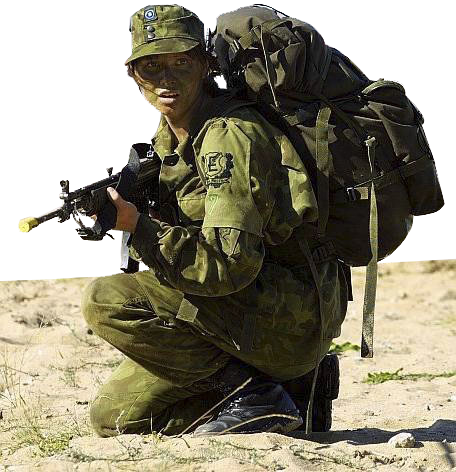
The Republic of Estonia (Eesti Vabariik) is a small Baltic country with a population of just 1.4 million people. The country's language and culture are very close to the Finns, who act in relation to the Estonian nation as the "elder brothers", including the matters of defence and security. After the withdrawal of Soviet troops from three ex-Soviet Baltic republics almost all military equipment and appliances were removed too, and the governments of these three Baltic countries decided to restore the national army on the basis of its old pre-war traditions, almost "from the very beginning", and appealed to the neighbouring Western countries.
The military assistance was received basically from Sweden and Finland, as well as from Germany, which gave them their outdated military stuff and equipment, in the worst cases the Baltic countries had to pay only for the transportation of supplies. Soldiers and officers of the Baltic armies served in the armies of the Scandinavian countries, particularly in the Swedish army, just in the same way as the local military, with the exception of national flags worn. The idea was that after the service these military staff, having received the necessary skills and practical experience, had to go home and continue to train their country's recruits already on the basis of the Western Army and Navy standards.
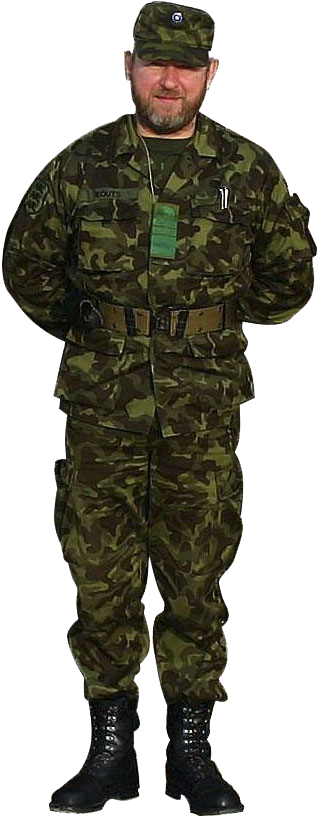
The Armed Forces of Estonia ("Kaitsevägi")

consist of three main components: the Land Forces (Army) - "Maavägi", the Navy - "Merevägi" and the Air Force - "Õhuvägi", and one auxiliary component - The Defence Union ("Kaitseliit"). All of these components are under the command of the Estonian Ministry of Defence ("Eesti Kaitseministeerium").
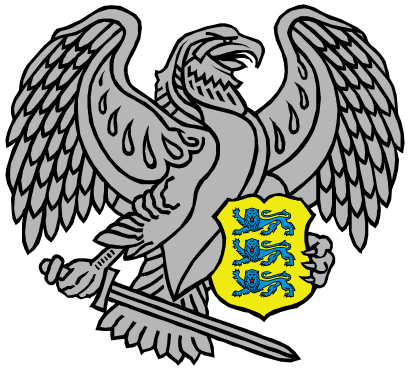
"Kaitseliit" is actually the Estonian analogue of the National Guard, and it was created on November 11, 1918 in order to protect the independence and territorial integrity of Estonia. It is subordinated to the Estonian Ministry of Defence and has approximately 13,000 members. If to take into account all the Estonian auxiliary organizations, such as "Naiskodukaitse" - "Women's Protection House" (medical and logistical support Kaytseliita), "Noored Kotkad" - "Eaglets" and "Kodutütred" - "Daughters of the homeland" (scout organizations), the Estonian Defence Union has up to 21 thousand active participants.
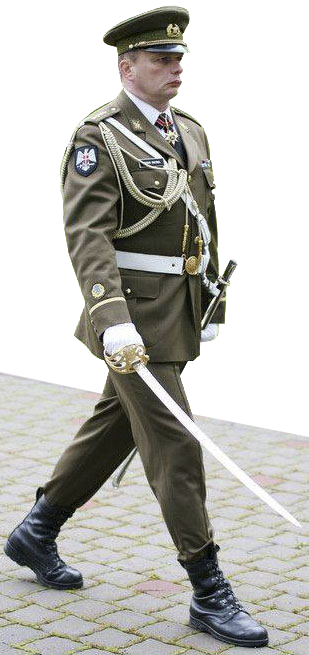
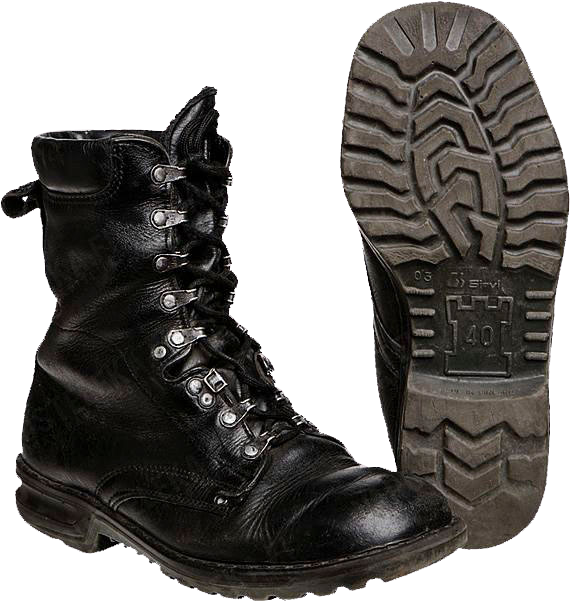
The regular Armed Forces of Estonia of the peacetime have approximately 3,800 military personnel in total (3,300 persons- in the army, 300 in the Navy and 200 - in the Air Force), 1,500 of them are recruits. During the wartime, the planned number of the regular Estonian Armed Forces is about 16 thousand people. In the recent years, the Estonian troops were taking active part in the peacekeeping operations in Kosovo, Afghanistan (as a part of ISAF), Iraq and Lebanon.
Since 1991, the Armed Forces and other state security agencies of Estonia used a wide variety of army boots. Among the main and most massive military boots in Estonia one should mention:
- Finnish M91 military boots by "Jalas" and "Sievi",
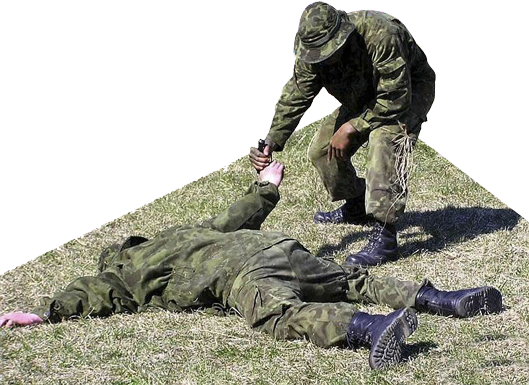
- Estonian "Alpi" boots of Mk I and Mk II models by "AIPI MA OÜ";
- Slovenian-made boots by "Alpina Tovarna Obutve" company;
and, more recently,
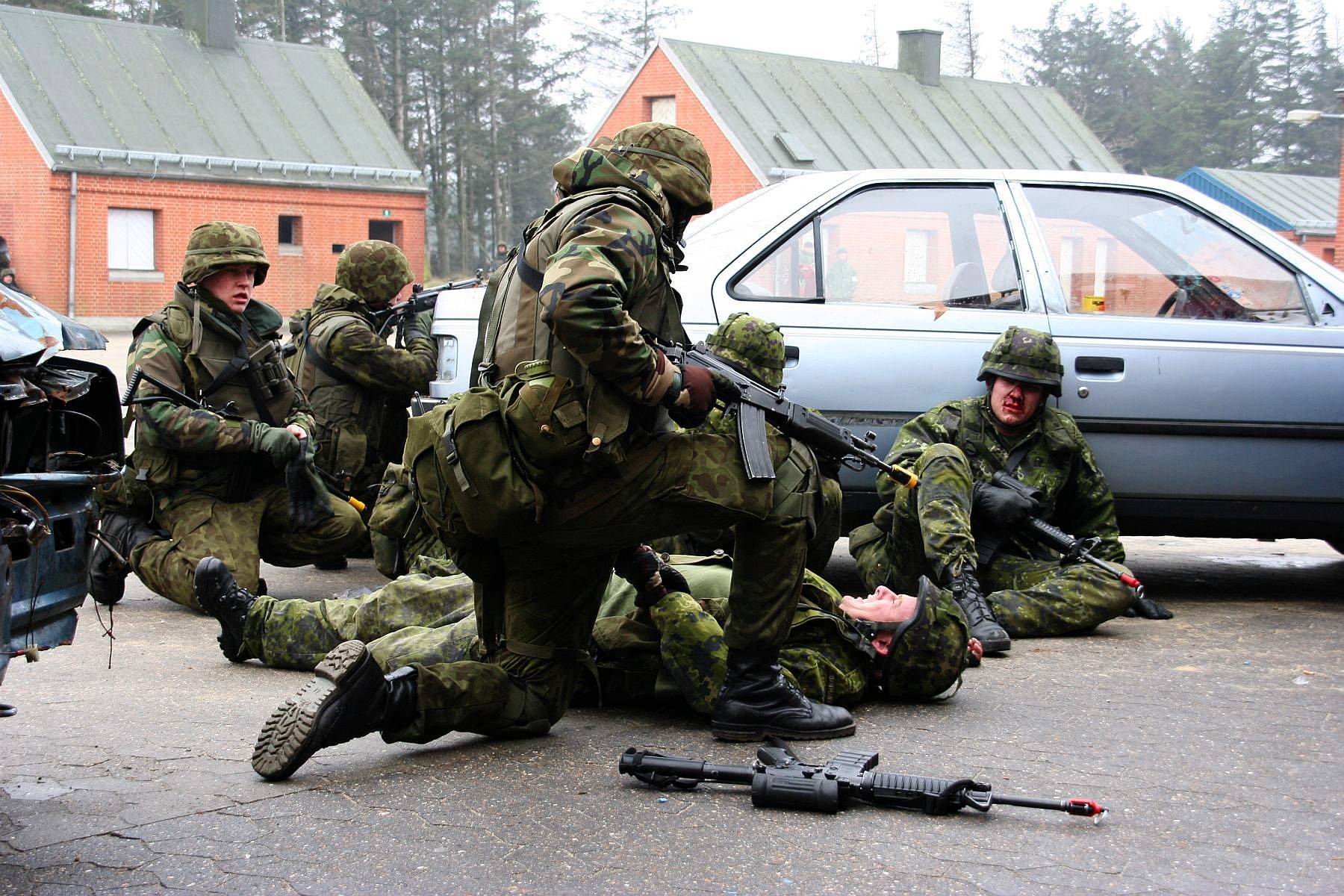
- Norwegian military boots model M/77 by "Alfa Skofabrik AS" and its sub-contractors "FOXBERG OÜ" and "Samelin Ltd".
At the early stage of development of the Armed Forces of Estonia used the Finnish army boots.
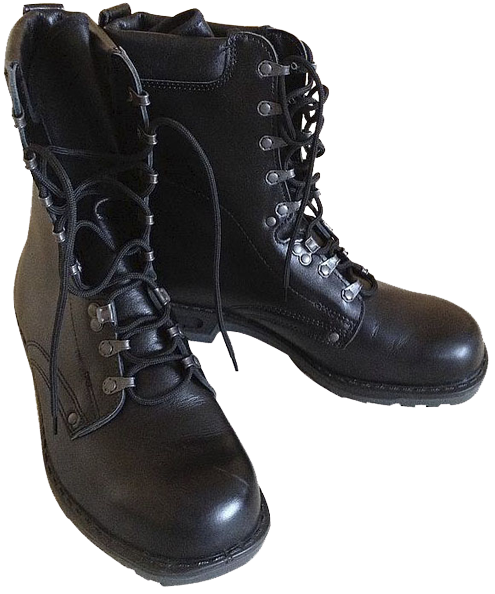
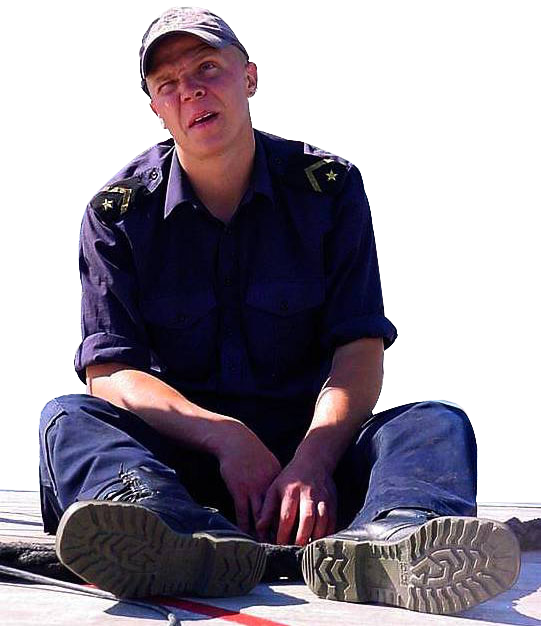
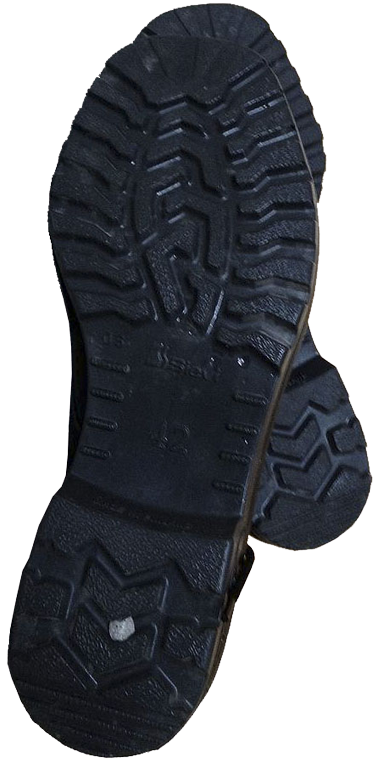
This was due to the closeness of military and economic relations between these two countries and by the Finnish military aid as well. These boots are still in use in the Estonian and the Finnish Armed Forces because there are stocks of such boots on the military warehouses. Since 2005, the Finnish Defence Forces (FDF) are gradually introducing the new boots of M05 model.
In addition to Finnish leather army boots, the Estonians also use the Finnish army rubber boots. Unlike the Finns, the Estonian main type of footwear is the leather boots, not rubber ones.
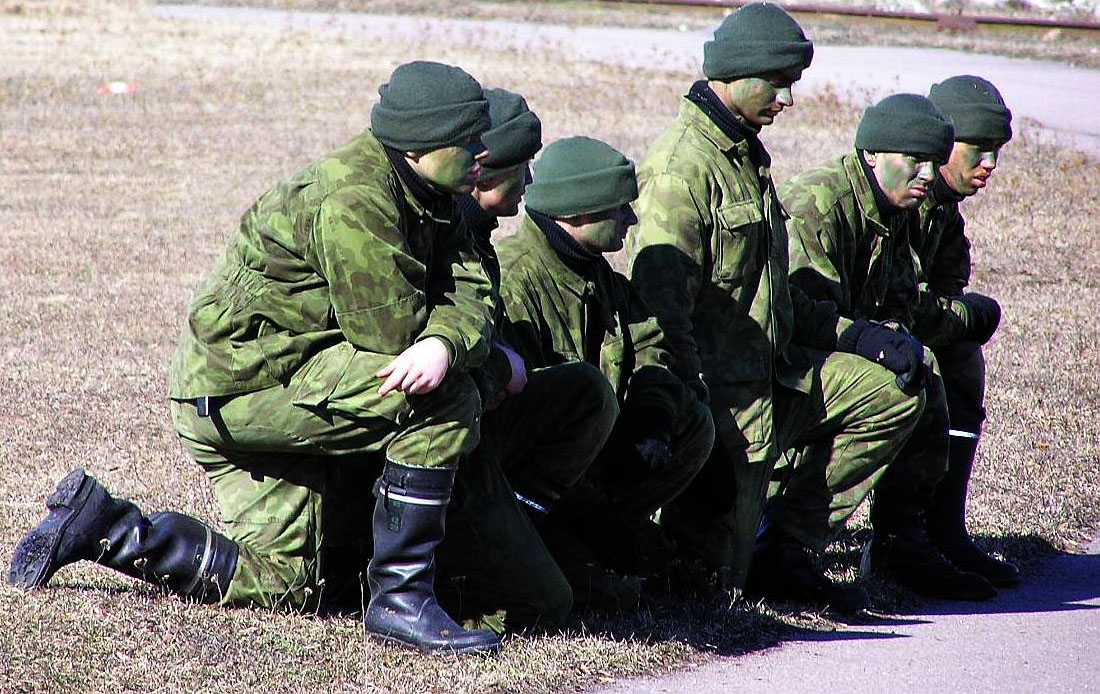
The nature and climate of Estonia is softer compared with Finland, also there are no large wetland spaces, but the wide use of standard Finnish rubber footwear by the Estonians was likely caused by mass deliveries of the Finnish military equipment and footwear.
The Estonian army boots of the first and second models (the so-called Mk I and Mk II boots), according to user reviews, were comfortable, simple and reliable, exactly as the real combat boots should be. Each pair of these boots were hand-made. Currently, these boots are not available in the army because of their high cost (about 140 Euros, approximately as the Norwegian M/77 boots).
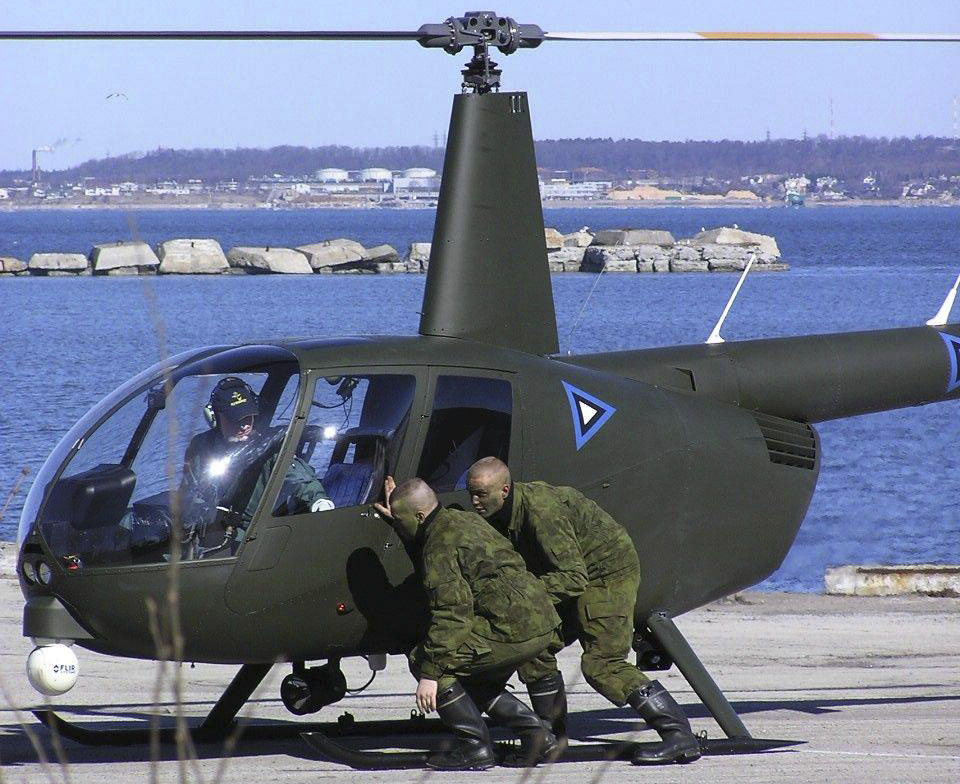
The first Estonian military boots were classic in their design: leather upper, leather mid-sole and out-sole made of solid vulcanized rubber. These boots were easy to maintain, very durable and maintainable. A pair of boots weigh 1,643 grams for the 43 size boots.
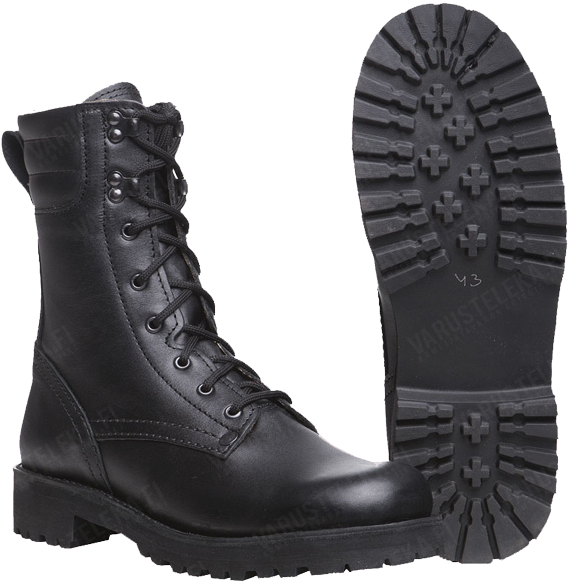
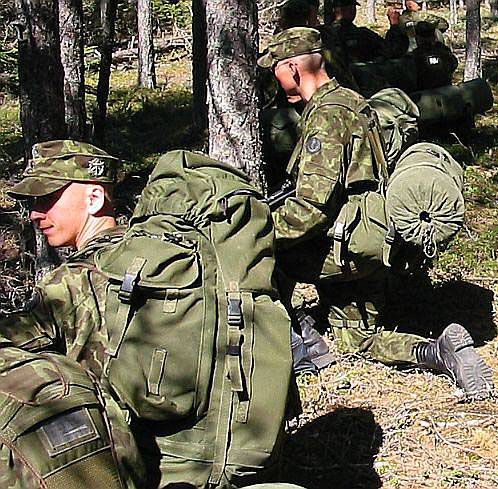
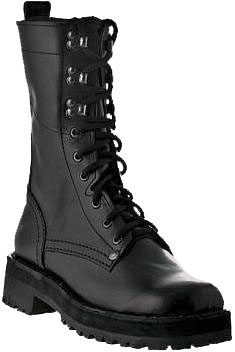
The upper part of the lacing system consists respectively of two or three pairs of hooks for lacing, the lower part - of six pairs of simple round eyelets. On the rear upper parts of the boot's top the boots feature big leather loops, intended to fix the excessive length of the laces, wound around the boots top, and to make easy pulling the boots on.
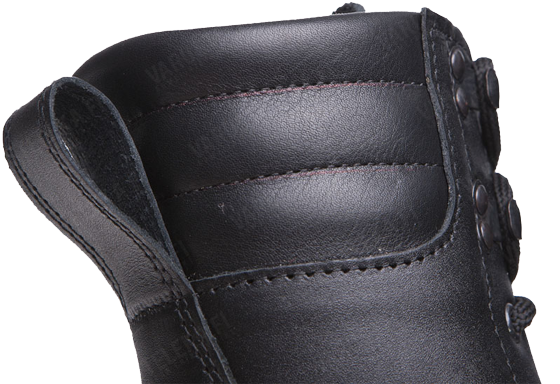
The boot's top is sewn to the mid-sole of thick leather, to which, in turn, the standard rubber out-sole with "Vibram" tread pattern is glued. This design improves the maintainability of the boots and facilitates the replacement of the worn-out rubber out-sole, because the leather upper is usually very little worn over time. This is the time-proved cost-effective way of footwear manufacturing, as the boots out-sole repair is always cheaper than manufacturing of a new pair of boots.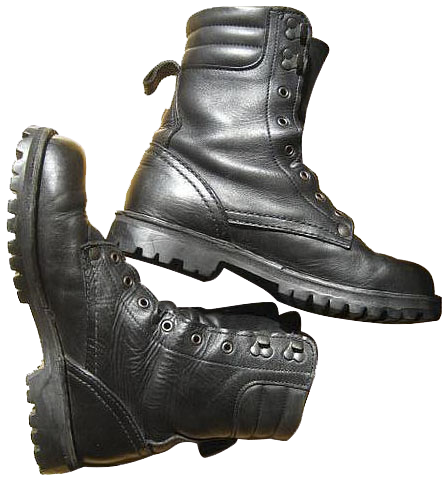
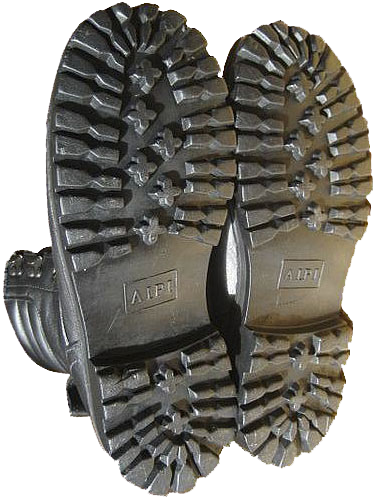
The difference between the Mk I and Mk II models are in the type of "collar" at the top of the boot. The Estonian Mk I boots featured soft and stitched "collar", while the second one had no "collar" at all, but an extra pair of hooks for lacing was added.

The producer of these boots is a Tallinn-based footwear company "AIPI MA OÜ", which specialize in hand-made production of quality leather boots since 1997.
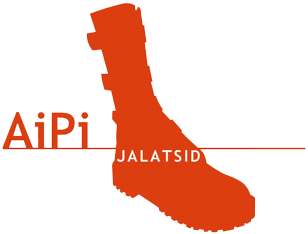
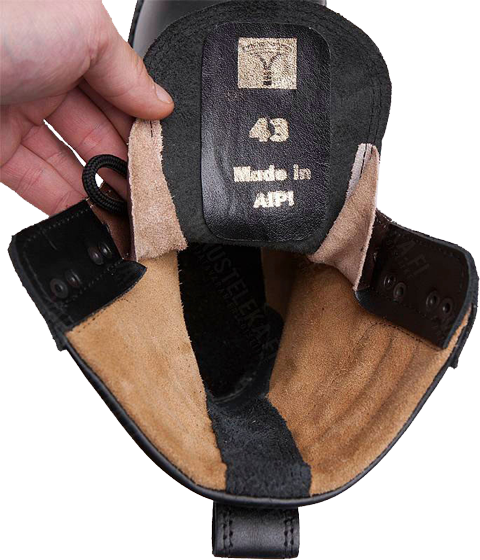
It produces footwear for law-enforcement agencies, and for industrial workers, hunters and climbers. It's products have the brand name "ALPI", the range of boots sizes is available from 35 to 51 in European (French) metric. Since 2009, the company has expanded its range of products, and began to produce the footwear for historical reconstructions (Viking's footwear, medieval European and national Estonian boots).
One of the largest manufacturers of boots for the Estonian Armed Forces is "Samelin Ltd." company. With the company's turnover of 4 million Euros per year approximately 70% of their products are the military boots. At the same time, not more than a fifth part of all the produced army boots are sold in Estonia itself. In the 1990s, "Samelin Ltd." have not been receiving any military orders on their products from the Estonian MoD, as the production capacity and production processes were outdated and far from the contemporary modern standards of military footwear. At this time it was the Slovenian "Alpina Tovarna Obutve" company, which supplied the army boots for Estonian military.
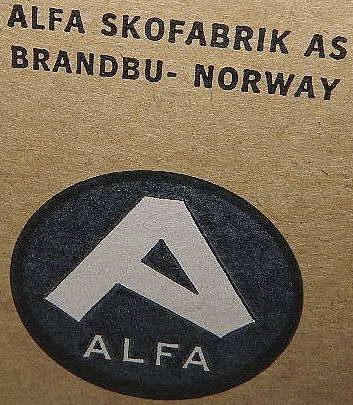
In the future, thanks to large-scale orders from the Norwegian Armed Forces and the appropriate investments, the "Samelin Ltd." company got the opportunity for sufficient development, and began supplying the Estonian military too. The Norwegian orders began, when "Alfa Skofabrik AS", the Norwegian developer and manufacturer of Norwegian M/77 military boots, chose "Samelin Ltd." as its subcontractor, installed their own equipment on-site and trained the local Estonian staff.
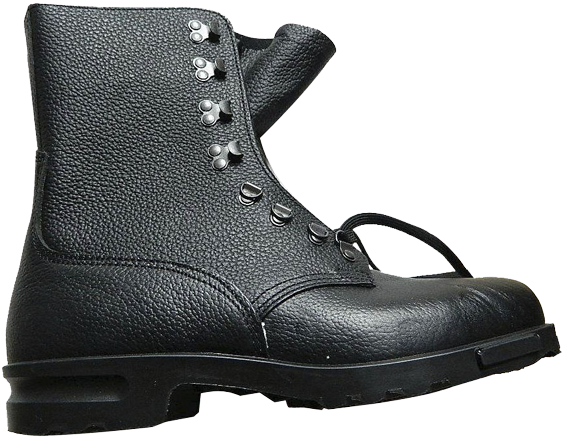
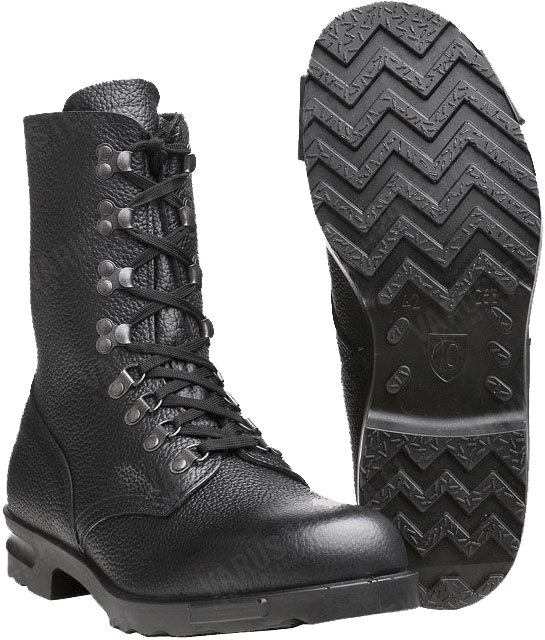
The successful technological development of the company, skilful work of Estonian specialists and relatively low cost of the products resulted in the fact, that tens of thousands of M/77 boots for the Norwegian Armed Forces are made in Estonia, but of leather raw materials imported from Norway.
Now the "Samelin Ltd." company is the largest footwear manufacturer in Estonia with the number of employees of about 200 people. The company, whose headquarters is located in Tartu city, is the member of the of Estonian Defence Industry Association and participates in the activities of SATRA Technology Centre.
The company mainly produces the military boots, compliant with safety standards, ISO 9001:2008 quality system and AQAP 120, for the army and police of Estonia and Norway.
In addition, the brand name "Samelin" means also the working and safety boots, and specialized footwear for hiking and skiing. The company competes in the international market as well.
Thus, according to the Estonian newspaper "Eesti Päevaleht" of September 17, 2008, "Samelin Ltd." managed to win the tender for the military boots procurement (8000 pairs) for the Bundeswehr and some other NATO armies, having left behind twenty other companies participating in the tender...".
According to Mrs. Leida Kikka, the owner of the company, the manufacture of military boots is quite a complicated process because of the high quality requirements. The manufacturer can not reduce the cost of the process through the use of less expensive and worse in quality materials. At the same time, combat boots do not become obsolete in terms of fashion and do not change according to fashion trends. It is necessary to set up production and one can produce the same model for years.
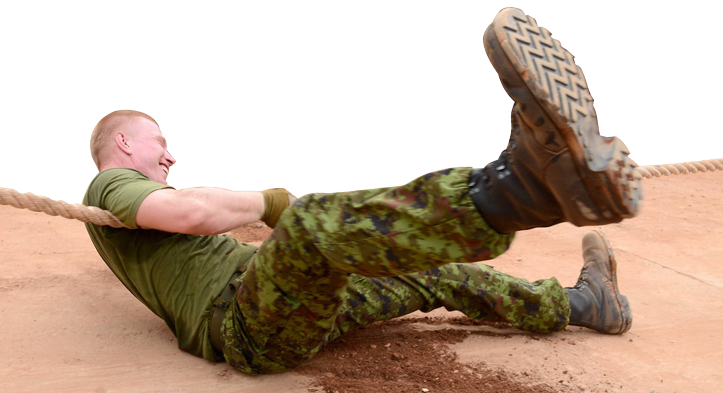
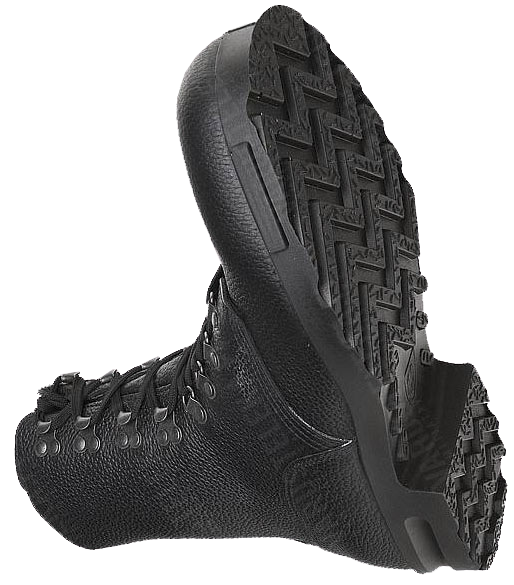
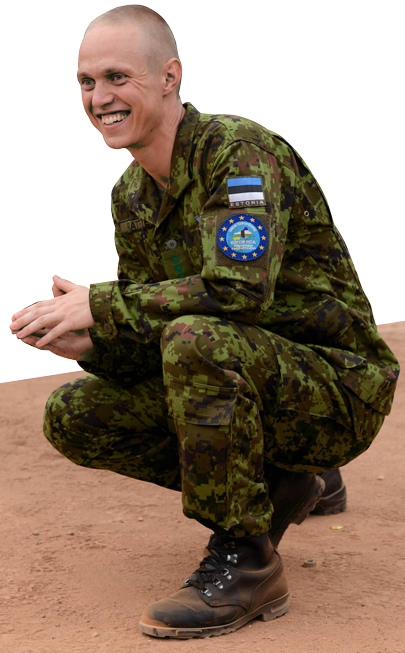
The traditions of footwear production at the company, which has became "Samelin Ltd." later, date back to the year 1945. In its present form the company operates since 1994, when such famous Scandinavian companies as "Haglöfs" and "Alfa Skofabrik AS" chose this Estonian company as a subcontractor. The investments and technology infusions allowed to organize the cutting-edge production, on which most of the boots are made for Norwegian and Estonian military and police forces.
Some photos show the new Estonian "pixel" camouflage ESTDCU (Estonian Digital Camouflage Uniform), which by its colouring is much more suitable for local Estonian natural conditions and should gradually replace the old-style camouflage, which was actually a version of the Soviet-era "three-color camouflage". The new Estonian ESTDCU camouflage was developed in the years 2005-2006 by the local designer Andres Lüll in cooperation with the Centre for Logistics of the Estonian Armed Forces. Since 2007, Estonia began to transfer gradually its Armed Forces, starting with the ground forces and Kaytseliit to this new ESTDCU "pixel" camouflage, which was clearly modelled on the Canadian CADPAT (Canadian Armed Forces Temperate design) camouflage.
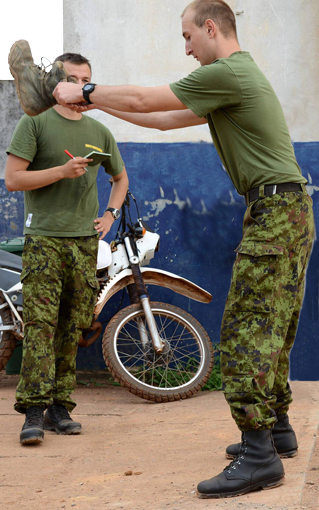
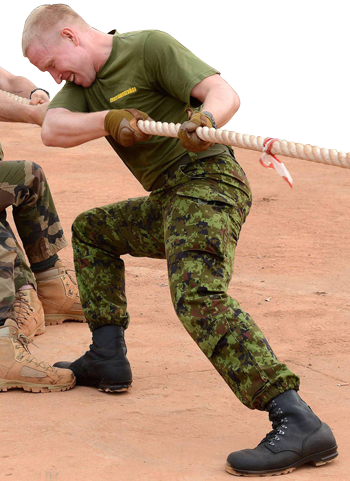
The ESTDCU uniforms is produced in Estonia and has several colour options (forest, desert, urban, winter), a set of such uniform costs about $ 300 US.
"FOXBERG OÜ" is an Estonian company, specializing mainly in the production of equipment for the armed forces and law enforcement agencies, but it manufactures as a variety of goods for tourists as well. The company's headquarters is located in Harjumaa, 10 km from Tallinn.
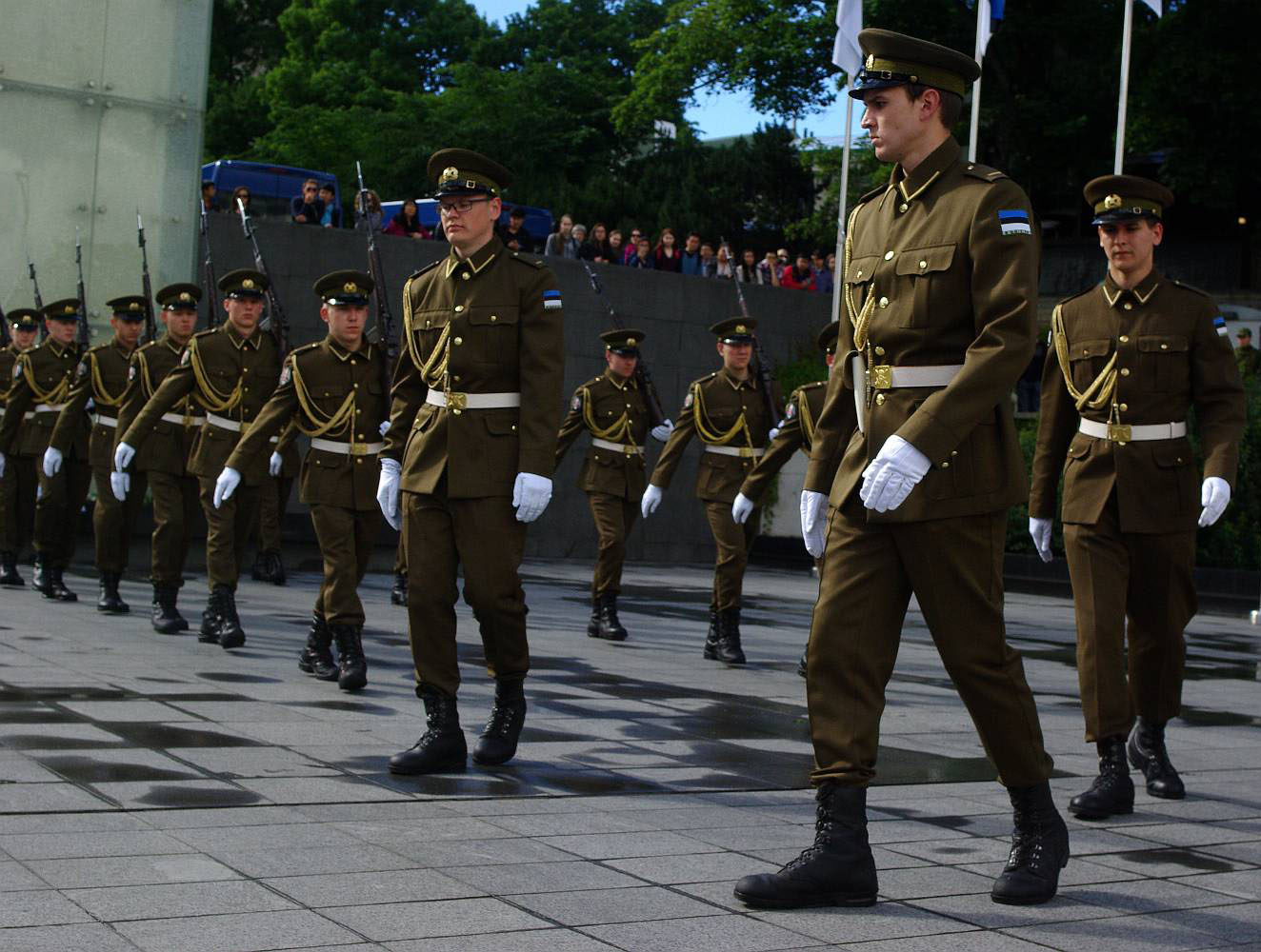
The Norwegian M/77 combat boots by "FOXBERG OÜ" can be purchased on-line for about 140 Euros. The Norwegian Ministry of Defence marking on the out-sole means that these boots meet all the quality requirements and regulations.
Estonian Black Combat "Desert" Boots (Eesti Kaitseväe saapad - must kõrbesaabas) Samelin model 598
The Estonian boots model 598m, designed for both dry and wet weather, are quite lightweight and comfortable, as the real tactical boots should be.
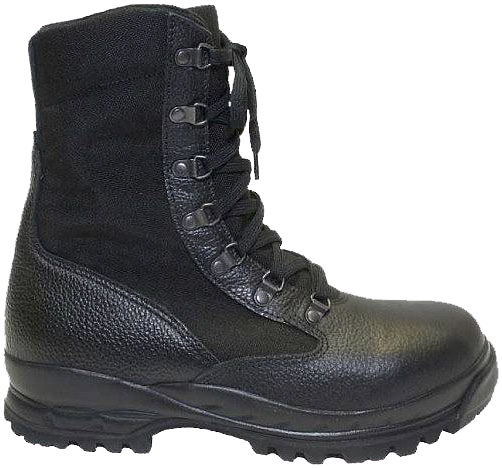
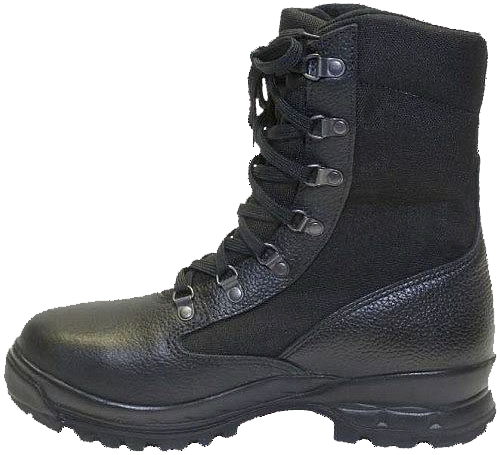
The boot's top is composite and made of hydrophobic grained chrome leather and breathable wear-resistant "Cordura" nylon, the "Cambrelle"-type breathable lining is also made of synthetic material. The lacing system consists of seven D-shaped half-rings of metal. The "Vibram"-made out-sole is slip-resistant and combined in structure (polyurethane+rubber). The boots have included the breathable and washable insoles (3 mm of thickness) with antistatic and antibacterial properties.
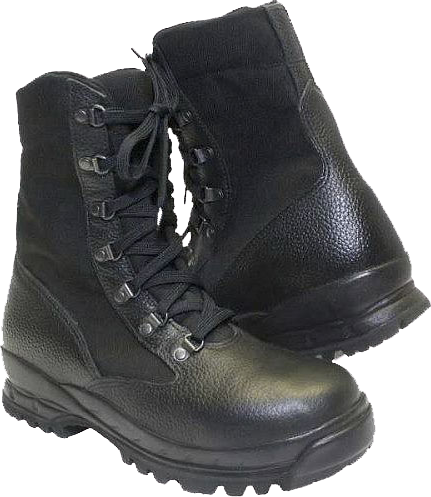
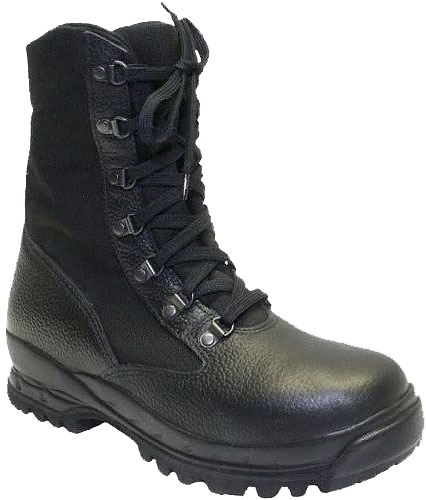
The cost of these boots in Estonia is 72 Euros, but during the discounts season they can be purchased for just 55 Euros.
The Slovenian-made boots by "Alpina Tovarna Obutve", which are supplied to the Armed Forces of Estonia, comply with the new trends of combat boots design that gained strength since the late 1990s.
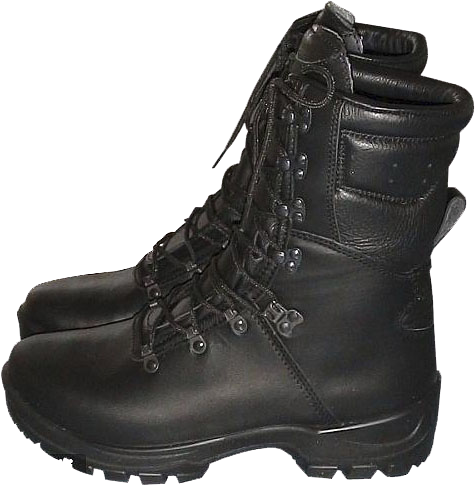
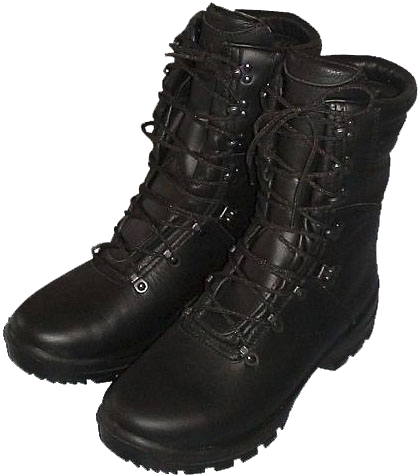
The new concept meant the following characteristics: minimum number of seams; several layers of the leather (outer, inner, intermediate cushioning inserts); soft stitched leather "collars" on of the boots top; damping inserts on the boot's counters; transition to the "Direct Moulded Sole" method"; use of oil-, petrol -, acid-resistant and anti-slip out-soles, consisting of several layers (PU + thermo- or rubber, resistant to abrasion and extreme temperatures), etc.
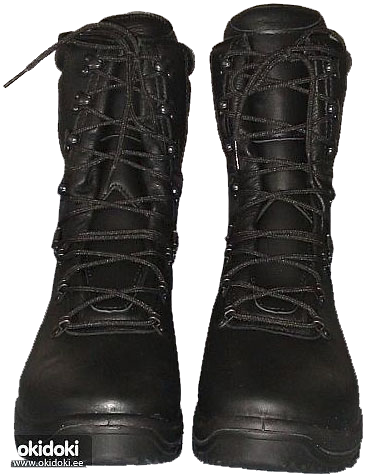
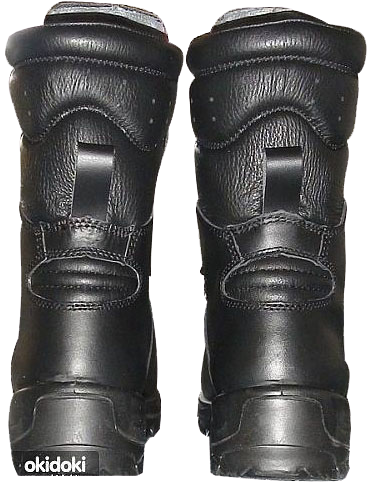

The Slovenian "Alpina" boots correspond to all these conditions. Unlike many other European countries, which often prefer to support their manufacturers by military orders, the Armed Forces of Estonia is not adherent to the policy of domestic support at all costs. The military purchases are made on the competitive basis, and the Estonians try to keep the balance of quality and cost, regardless of the country of origin, and to economy as much as possible.

With regard to all the military equipment, purchased for the Armed Forces of Estonia, one should mention that about a half of the necessary stuff is produced within the country. It is common, when the Estonian producers get most of its profits from exports abroad, supplying the national army with only a small part of their own products. This is just due to a desire to choose products for procurement on the "lowest price" basis.
For example, the socks, which are worn by Estonian soldiers, are all imported. According to the feedbacks from users, they are not as high quality, which could provide "Suva", the largest Estonian socks producing company, most of the products of which are exported.
Nevertheless, the Estonian producers are hoping for a change of policy the Estonian Ministry of Defence in their favour, and not without reason. The Ministry of Defence recently announced its interest in a strong national defence industry which could be able to continue supply the required stuff even in time of war or crisis. The Estonian Defence Minister Sven Mikser urged the Estonian companies to participate actively in the military tenders.
The total amount allocated for the purchase in the year 2014 is 111.5 million Euros. The current legislation prohibits direct purchases in Estonian companies only, but the problem solving is in the increasing competitiveness of the Estonian companies. The stronger the company's market position, the more likely the Estonian Ministry of Defence would purchase their products. Already in 2014, the Estonian companies can "grab" up to 55% of the national market of military supplies, estimated for over 61 million Euros.
The sources of the photos and information:
www.kaitseliit.ee
www.mil.ee
www.delfi.ee
www.aipi.ee
www.foxberg.ee
www.samelin.ee
www.varusteleka.com
http://news.postimees.ee
http://balticbusinessnews.com
http://pildid.mil.ee
http://riigikaitse.lehed.ee
http://okidoki.ee
Exclusively for cartalana.com
We have much more interesting information on this site.
Click MENU to check it out!
∎ cartalana.com© 2009-2025 ∎ mailto: cartalana@cartalana.com